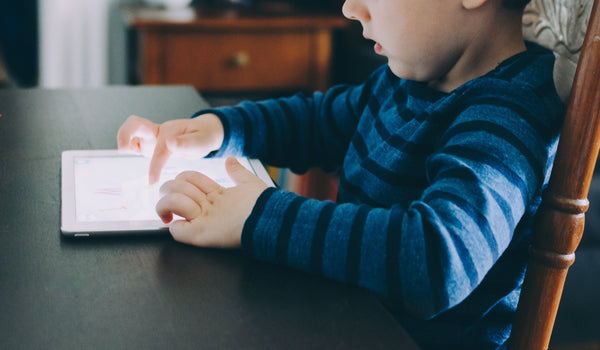Identifying Behavioral Problems in Children

A temper tantrum in a young child is often seen as commonplace behavior in today’s society. Kicking, crying, screaming, and fussing are simply dismissed by parents and professionals alike as typical childhood behaviors. However, many of these actions may be symptoms or warning signs of a more serious behavioral disorder. This conundrum leads many disgruntled parents, teachers, and professionals alike to ask the question: “How can I tell the difference between a ‘bad mood’ or an underlying behavioral disorder?”
Although it’s extremely easy to dismiss “bad” behavior as a normal part of growing up, it’s important to know the difference between a rambunctious child and one suffering with a behavioral problem or mental illness. The Mayo Clinic, as well as several other medical journals and websites, has several symptoms to watch out for in children to determine if they are suffering from a behavioral or emotional disorder. Some of these include a change in school performance, an excessive amount of tantrums or “acting out”, hyperactivity, frequent outbursts of anger, strained relations with peers and family members, defying rules in both school and at home. Sometimes behavioral and mood disorders can present themselves as physical symptoms in children such as headaches and stomachaches.
A common factor amongst these symptoms is the duration for which they occur and whether or not they are appropriate for the age of the child or adolescent. Temper tantrums in a two year old may seem normal and appropriate, but are they as common in a 13-year-old? Temper tantrums can normally last for about 10 minutes, but how common is it to last for hours on end? These questions are only two of numerous questions asked by researchers and medical professionals. Since mental illness has such a drastically different effect on an individual, drastically different measures must be taken when it comes to both discipline and the nurturing of self-expression and self-confidence. This is especially important during the key developmental stages in childhood.
According to the Journal of Developmental & Behavioral Disorders, externalizing behavior problems (e.g., acting out) are present in 20% of school age children, making it the most prevalent amongst that age group. Although this statistic may seem insignificant to some, it’s a serious issue amongst parents and caregivers. This can also be an extremely difficult time for the child as well; especially during the formative years of the brain and body in general. It’s not only important for the family members, caregivers, and teachers to provide appropriate disciplinary measures, but it’s crucial for children to have structure and a means of emotional expression.
As expected, a significant amount of childhood behavior problems can be addressed with parent practices, school and therapy based interventions, and the creation of a nurturing and accepting environment. Early intervention programs in these situations are essential. The brain develops at a rapid rate during childhood, and it’s important to address although each child is different; identifying feelings is one of the first and most important steps to gaining control of their own behaviors.
The My Moods, My Choices™ flipbook is a new and innovative program that helps children express themselves starting from ages three and up. This flipbook is an easily accessible and digestible tool for children with Autism, ADHD, Asperger’s, and Special Needs. The book is made of extremely sturdy material and can be mounted on a desk or table. It contains 20 different and easy to find moods that children have the option of flipping to in order to express their emotions. Each emotion has a list of positive actions that children can take in order to properly and appropriately express each emotion.
This tool can be groundbreaking for a child with communication and spectrum disorders, and gives them power to express themselves without behaviors that are detrimental to both themselves and others. The flipbook gives children pause to sit with their emotion and figure out (with the help of whomever they are with) how they can express their feelings. The suggestions of how to deal with these feelings also enforce positive actions and attitudes that can be taken in place of acting out or destructive behaviors.
Order the My Moods, My Choices™ flipbook today to use in your child behavioral therapy practice or at home with your own kids.
Also in Blogs

Does Your Child Live in a High-Conflict Environment?

“What's On?” The Impact Of Media On Kid's Emotional Well-being

